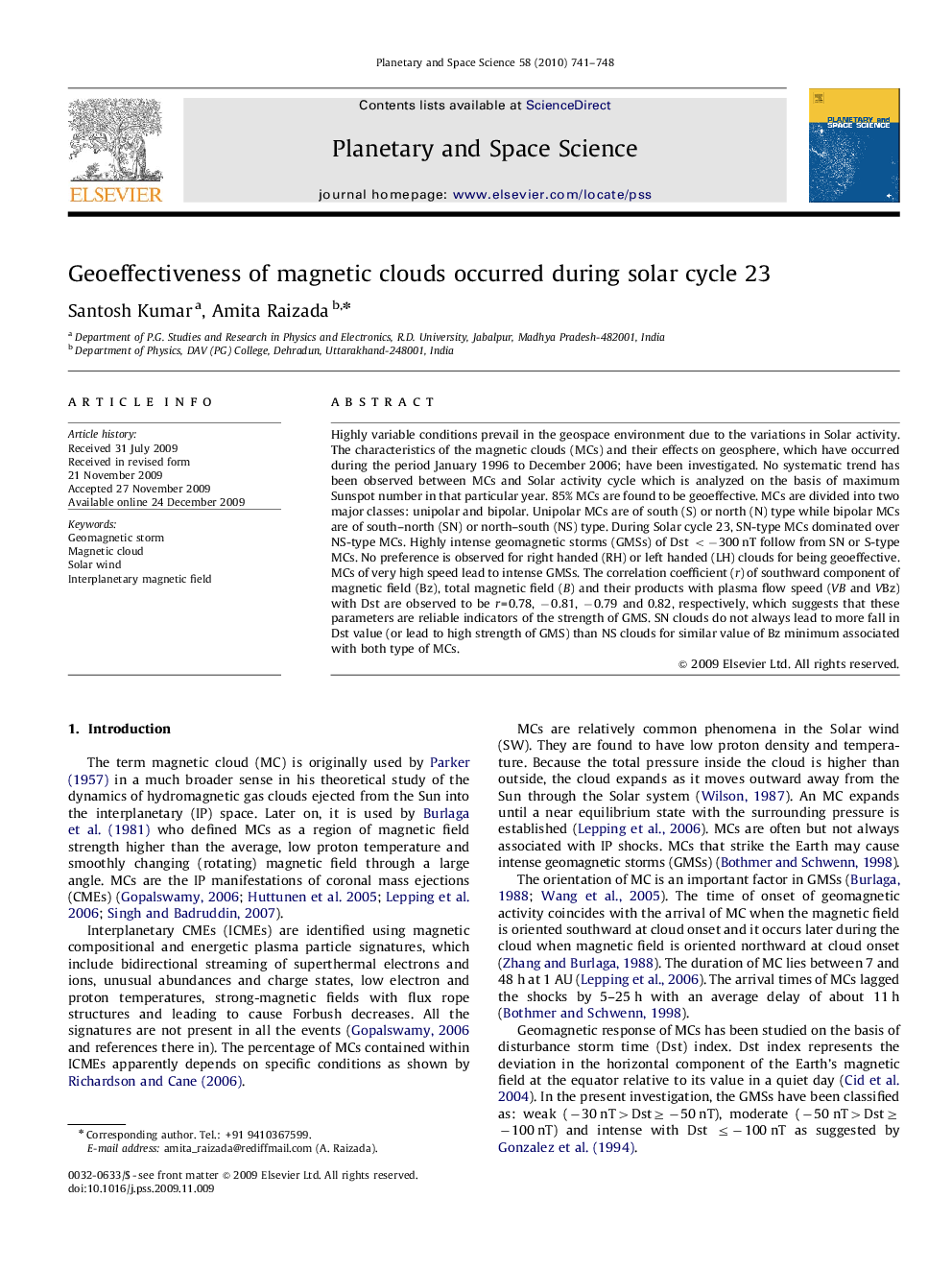| Article ID | Journal | Published Year | Pages | File Type |
|---|---|---|---|---|
| 1781843 | Planetary and Space Science | 2010 | 8 Pages |
Abstract
Highly variable conditions prevail in the geospace environment due to the variations in Solar activity. The characteristics of the magnetic clouds (MCs) and their effects on geosphere, which have occurred during the period January 1996 to December 2006; have been investigated. No systematic trend has been observed between MCs and Solar activity cycle which is analyzed on the basis of maximum Sunspot number in that particular year. 85% MCs are found to be geoeffective. MCs are divided into two major classes: unipolar and bipolar. Unipolar MCs are of south (S) or north (N) type while bipolar MCs are of south-north (SN) or north-south (NS) type. During Solar cycle 23, SN-type MCs dominated over NS-type MCs. Highly intense geomagnetic storms (GMSs) of Dst <â300Â nT follow from SN or S-type MCs. No preference is observed for right handed (RH) or left handed (LH) clouds for being geoeffective. MCs of very high speed lead to intense GMSs. The correlation coefficient (r) of southward component of magnetic field (Bz), total magnetic field (B) and their products with plasma flow speed (VB and VBz) with Dst are observed to be r=0.78, â0.81, â0.79 and 0.82, respectively, which suggests that these parameters are reliable indicators of the strength of GMS. SN clouds do not always lead to more fall in Dst value (or lead to high strength of GMS) than NS clouds for similar value of Bz minimum associated with both type of MCs.
Related Topics
Physical Sciences and Engineering
Earth and Planetary Sciences
Geophysics
Authors
Santosh Kumar, Amita Raizada,
